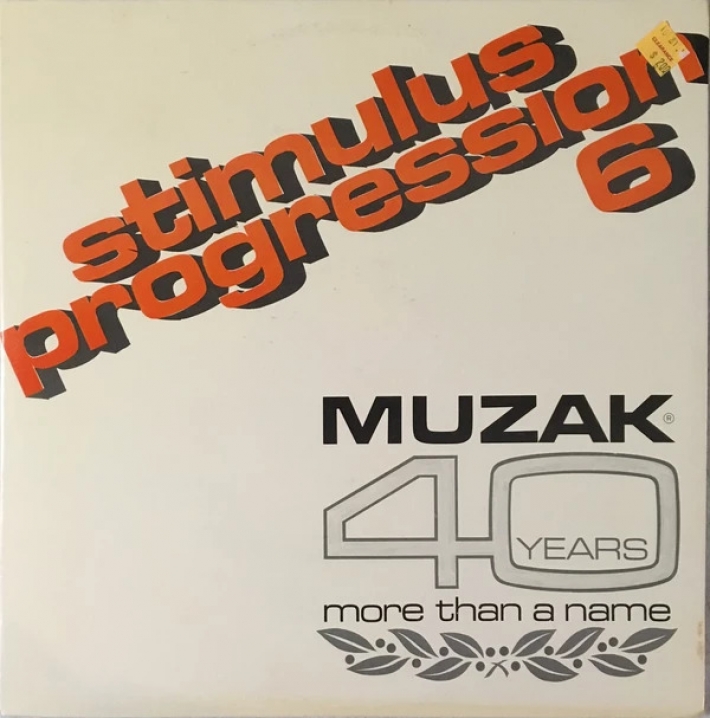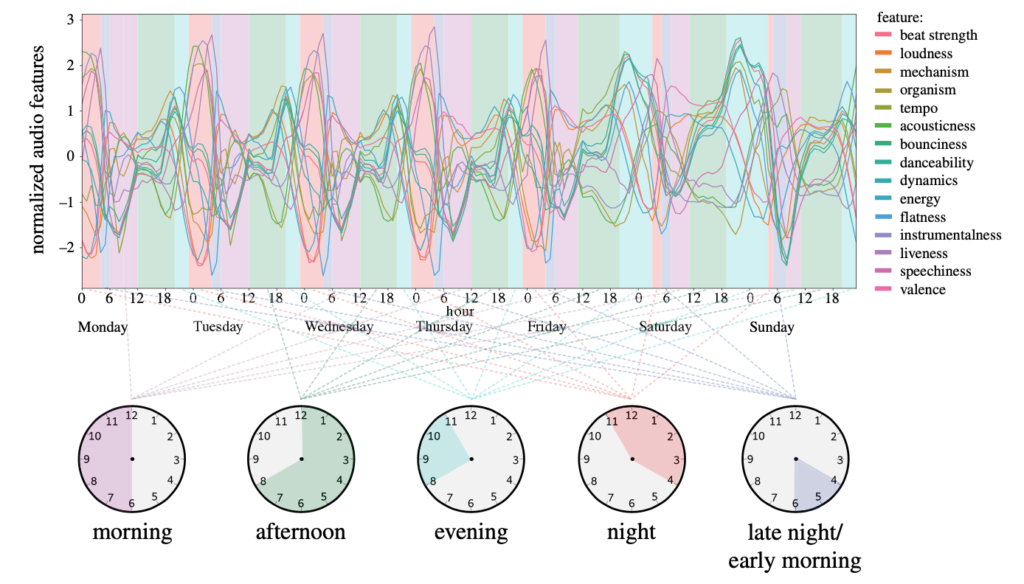Attuning Music to Your Daily Rhythm
by Emma Prestage

There is something to be said for using music for pleasure, but what about using music to boost productivity? As humans, our circadian rhythm is dominated by diurnal cycles. Our days possess patterns which our body clocks regulate. Within those patterns are peaks and troughs: our highest and lowest functioning levels of the day. Music can play a significant role in enhancing productivity at those critical times.
On average, a person listens to over one thousand hours of music each year. So many activities are intrinsically linked to it. When I awake each morning, the very first thing I do is turn on my beach house playlist: a calm and nostalgic blend of Jack Johnson and Norah Jones. When studying in the library, the classical compositions of Mozart and Beethoven carry me through hours of schoolwork. When someone hands me a karaoke mic, you better believe I’ll be belting out “Drops of Jupiter,” “Dancing Queen,” or “Man! I Feel Like a Woman.” At night before bed, Mac Miller is my substitute for melatonin. This routine rarely deviates; it is not intentional, but instinctual.

Music’s influence on humans has been known since antiquity. Musicologist Ruth A. Solie notes in her book Music in Other Words: Victorian Conversation daughters would spend hours practicing piano so that they could play for their fathers and relax them after long days at work. In the mid-twentieth century,the company Muzak devised tools to optimize working environments. Joseph Lanza’s Elevator Music: A Surreal History of Muzak, Easy-Listening, and Other Moodsong explores how specific techniques and types of music were used to enhance productivity in the workplace. Intentional stimulus progression was fostered by alternating 15-minute blocks, one with increasing tempo and loudness and one silent.
From Victoian daughter’s “girling” at the piano and the mercantile workers to me and my carefully curated running playlist, music has historically proven its impact. The only difference between companies using Muzak in 1950 and my using Quinn XCII in 2023 is that intentionally listening to music for its effects is now widely practiced – even Spotify provides an auto generated “Time of Day” playlist!
While some hold very strong opinions about the quality of certain songs and albums, listening to music is an entirely subjective experience. It is an art that truly is best appreciated in the ears of the listener. Every person has different musical tastes, not any less valid than another’s, yet despite such variety we all seem to follow similar daily musical trends. When music transitions from being used for leisure to being used with labor , it can be categorized by time for optimal effect. But, how can one place compositions from the varying genres of music into simple categories for times of day? The answer is actually quite simple: by analyzing each song’s features and the responses they trigger.
In a 2021 research study, Ole Adrian Heggli, Jan Stupacher, and Peter Vuust used Spotify’s listening data to show general shared preferences for music throughout the day. They were able to illustrate “how even something as individual as musical preference is influenced by underlying diurnal patterns.”

The general trends were somewhat predictable: loudness was low in the morning, tempo was high at night, beat strength and danceability were also high at night, and other components followed expected trends. It makes sense that the fluctuations in energy levels we typically experience throughout the day are matched by our music choices. It is a bit of a chicken-and-egg situation: our energy dictates our musical preference while the music we listen to directly affects our energy. Diurnal preference depends on the specific blend of audio features that make up the songs we listen to, each feature evoking a different physical and psychological response – whether that be high energy, drowsiness, focus, etc.
But, how exactly does music trigger a response at all? Surprisingly enough, the reaction we have to music is closely tied to heart rate and blood pressure. Music that quickens heart rate also heightens energy and alertness, whereas music that slows heart rate calms and mellows. A 2016 study by Hans-Joachim Trappe and Gabriel Voit compared the cardiovascular effects of works by W.A. Mozart, J. Strauss, and ABBA, all of whom provide clearly different listening experiences.
The instrumental works of Strauss and Mozart slowed heart rate and blood pressure, calming listeners. ABBA’s music, on the other hand, showed little to no effect on heart rate or blood pressure. Trappe and Voit’s study concluded that while there is no known single musical variable that directly affects the cardiocirculatory system, pleasant keys and consistent volume and rhythm are few of many factors that may trigger calming effects on the body. This brings up another notable component of music: lyrics. Studies have found that music with lyrics provokes greater neurological responses and activates different regions of the brain. This can interfere with the body’s physical reaction to certain instrumental triggers, adding another layer to the study of music’s effects.
Moving from the scientific side of music’s attunement to human routine to the fun part: how exactly can we put this into practice in order to self-optimize? A 2014 article by Jordan Taylor Sloan gives guided instructions for how to listen to the right music at the right time in order to induce specific responses. Sloan writes that “if you know enough about how music affects you, you can harness its powers to make your day better.”
In the mornings, we seek calm music that increases in tempo over time, raising our energy levels. Studies have shown that songs with heavy bass trigger feelings of power and confidence, surging our levels of conceptual thinking and starting our days off strong. In the middle of the work day, music can help stabilize and maintain productivity levels, as long as it’s not music we like. Dopamine releases are great, but they decrease focus, so it is best to stick to an unusual genre while working. When driving, upbeat and fun music raises energy levels, indirectly causing more speeding and collisions. Instead of pop radio, calm classical music that keeps us alert but doesn’t get our blood completely pumping is the way to go. And on the treadmill, rap music has proven to provide tempo and motivation for workouts.
Whether or not one wants to chill out with music or charge up for work, in the end, it’s important to know yourself and the typic of music that helps you feel most productive – and happy – at any given time.